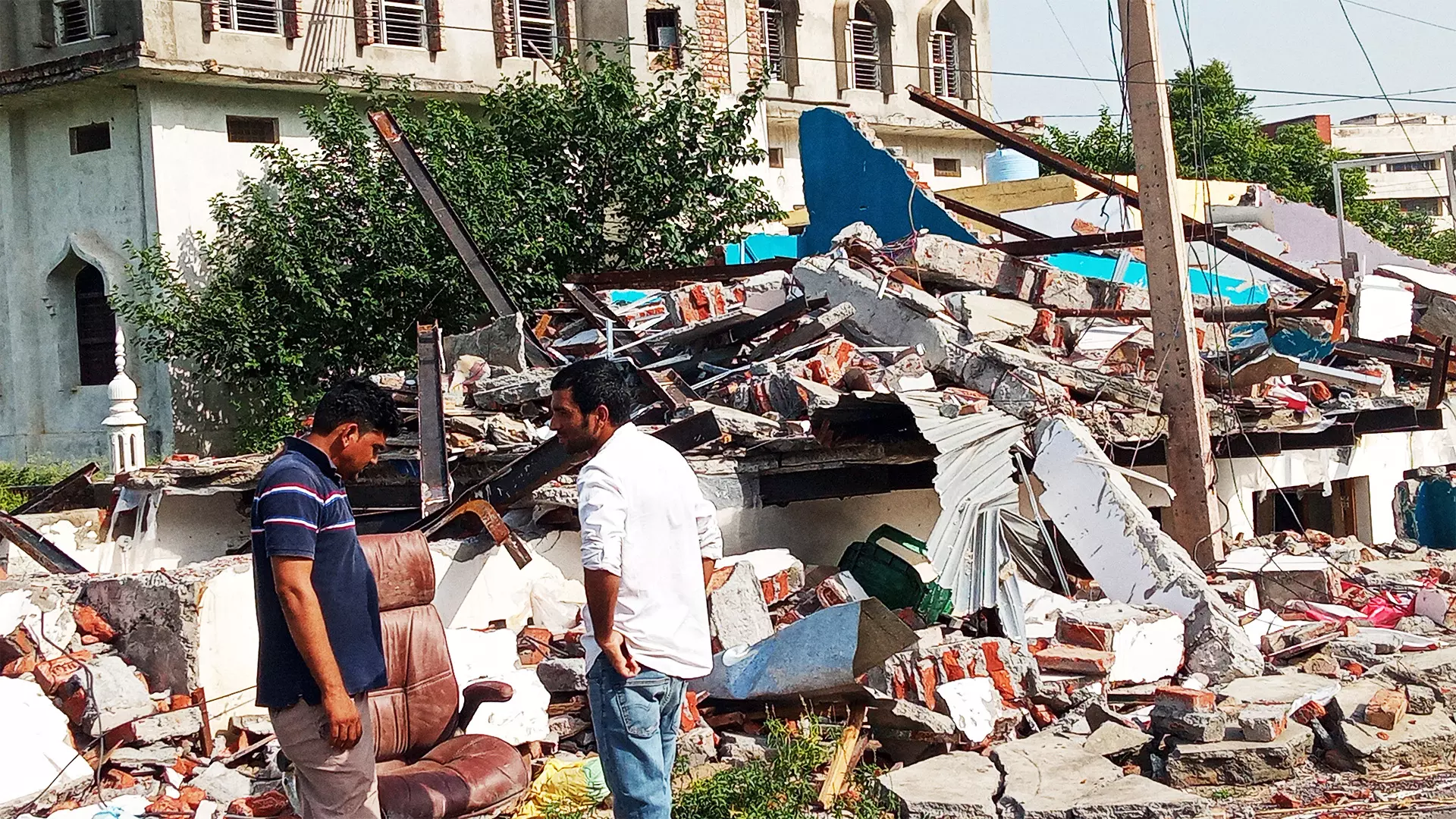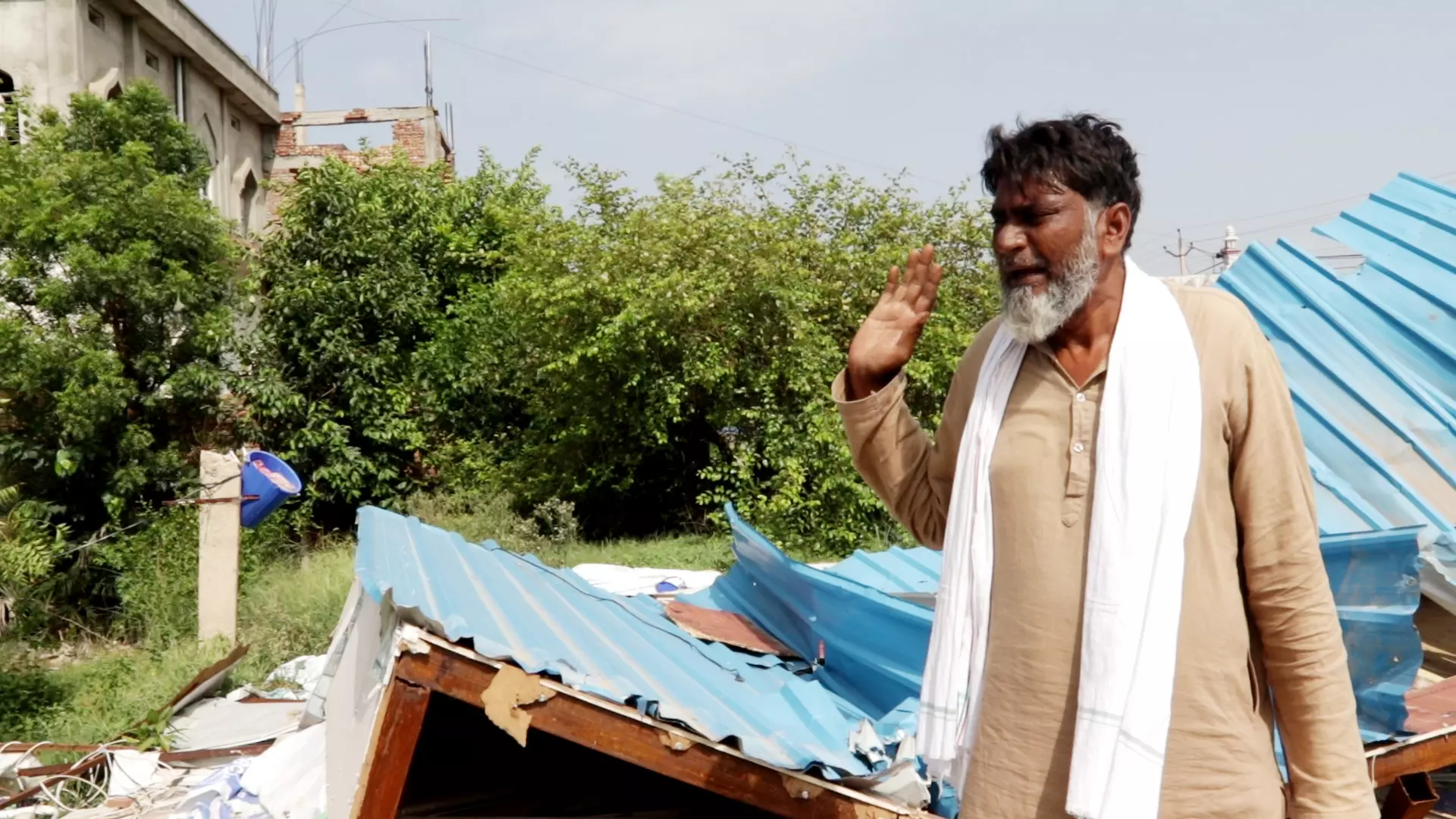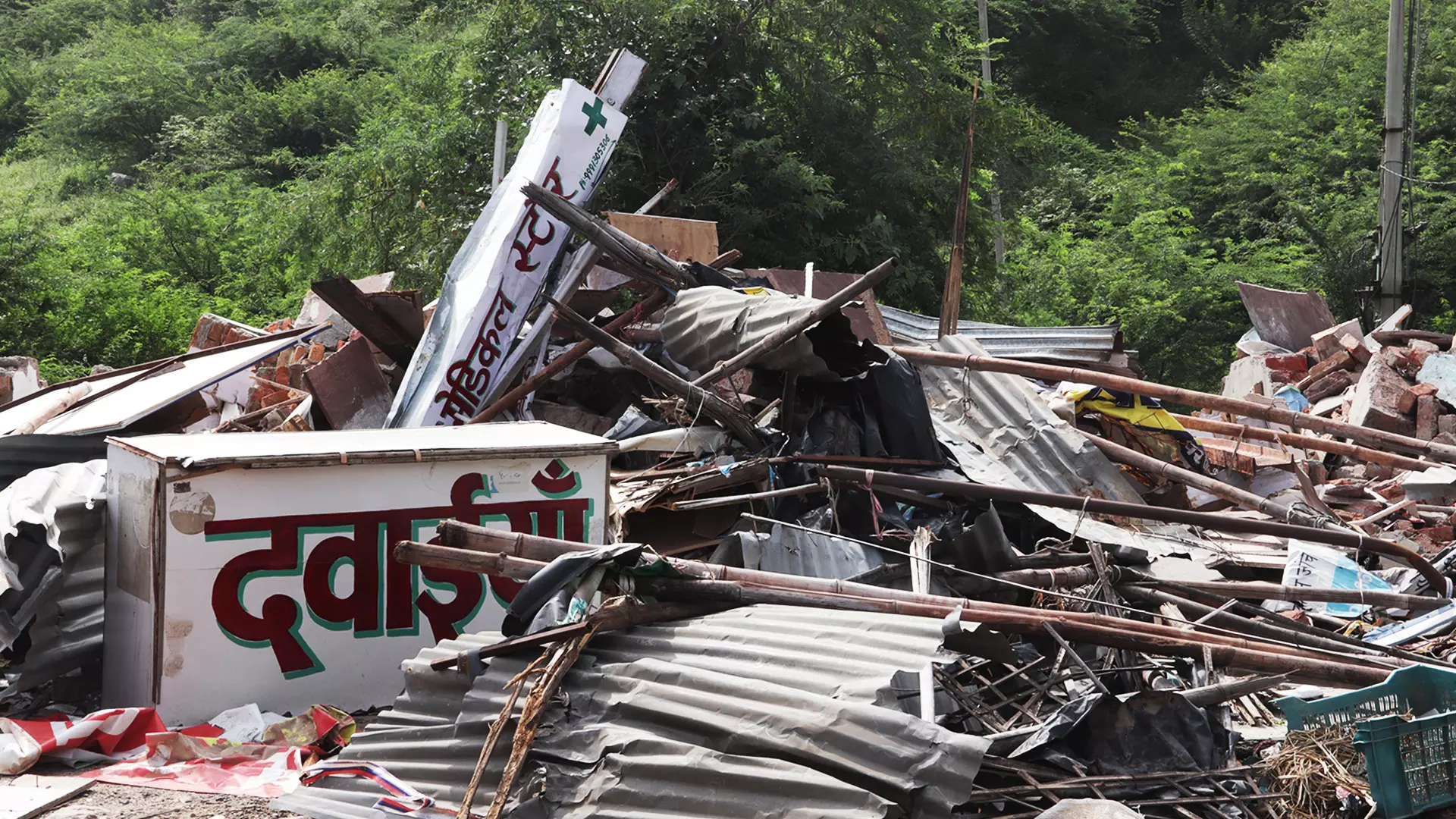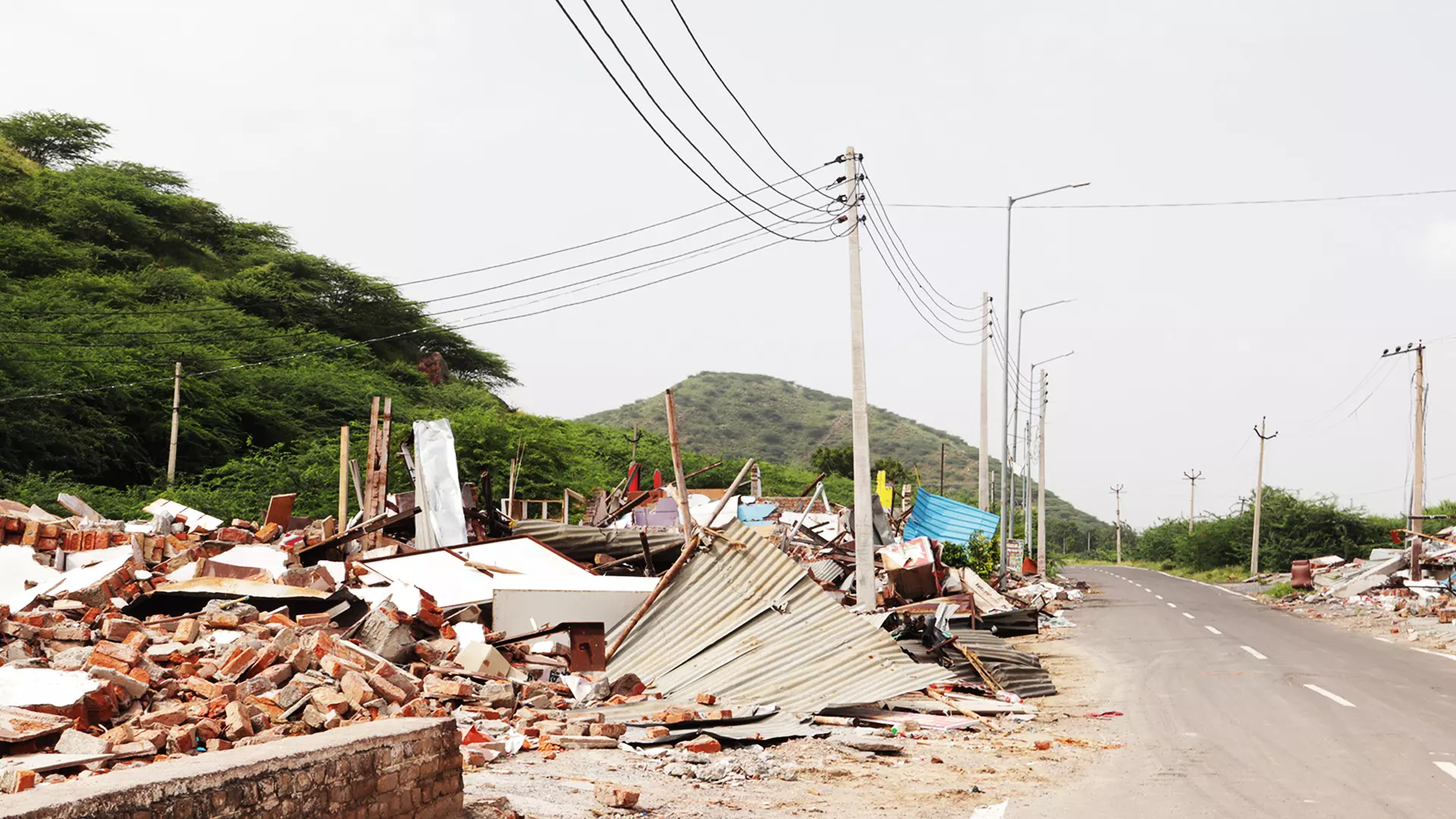
- Home
- India
- World
- Premium
- THE FEDERAL SPECIAL
- Analysis
- States
- Perspective
- Videos
- Sports
- Education
- Entertainment
- Elections
- Features
- Health
- Business
- Series
- In memoriam: Sheikh Mujibur Rahman
- Bishnoi's Men
- NEET TANGLE
- Economy Series
- Earth Day
- Kashmir’s Frozen Turbulence
- India@75
- The legend of Ramjanmabhoomi
- Liberalisation@30
- How to tame a dragon
- Celebrating biodiversity
- Farm Matters
- 50 days of solitude
- Bringing Migrants Home
- Budget 2020
- Jharkhand Votes
- The Federal Investigates
- The Federal Impact
- Vanishing Sand
- Gandhi @ 150
- Andhra Today
- Field report
- Operation Gulmarg
- Pandemic @1 Mn in India
- The Federal Year-End
- The Zero Year
- Science
- Brand studio
- Newsletter
- Elections 2024
- Events
- Home
- IndiaIndia
- World
- Analysis
- StatesStates
- PerspectivePerspective
- VideosVideos
- Sports
- Education
- Entertainment
- ElectionsElections
- Features
- Health
- BusinessBusiness
- Premium
- Loading...
Premium - Events

Nawab Khan Mewati looks disoriented. Once a proud owner of 30 medical stores located opposite the Hassan Khan Mewati Medical College and Hospital, Khan listlessly stares at the debris which was not too long back his property. At times, he aimlessly looks at the skies above.Khan’s properties were demolished by the Haryana administration, which also brought down 1,200 shops and...
Nawab Khan Mewati looks disoriented. Once a proud owner of 30 medical stores located opposite the Hassan Khan Mewati Medical College and Hospital, Khan listlessly stares at the debris which was not too long back his property. At times, he aimlessly looks at the skies above.
Khan’s properties were demolished by the Haryana administration, which also brought down 1,200 shops and shanties, including 50 shops opposite the hospital on the ground that they were illegal encroachments. The action came in the first week of August and continued for four days — from August 3 till August 6. What made the ‘encroachment’ charge suspect was that the action followed the Nuh violence which erupted on July 31.
“If these were illegal structures, how is it that they didn’t come with demolition orders earlier? These shops have been around for the last 10 years,” Khan said.
Khan shared that he had all the papers, including a stay order, from the court following a dispute over some of the properties owned by him.
If there was anything illegal, it was the demolition. Not just medical stores, but fruit juice shops, a tutorial establishment and eateries were brought down by a retributive administration, affecting the livelihoods of scores of people in one stroke. The bulldozing spree went on for four days. The action was reportedly taken because the police and the administration believed that the people who attached the yatra were also from this area.

Nawab Khan amid the rubble of his properties.
Near the Old Civil Lines area in Nuh, Sahara Hotel, a three-storey hotel-cum-residence was bulldozed. It housed a hair salon, a fast food restaurant and rooms for young students. The owner was a Muslim though he had employed both Hindus and Muslims. The owner is now on the run, fearful of being arrested. A car belonging to him was vandalised. The owner of a wholesale soft drink and juice store next to Sahara Hotel said that he used to supply to several kiosks on the Sohna-Nuh route but there was no demand since the bulldozing of such kiosks took place. “They were my regular customers. I had been supplying to them for years. The government levelled all the shops with bulldozers,” he said.
The administration claimed 753 properties were demolished, but Tahir Hussain, one of the advocates representing those whose homes were demolished, said that close to 1,235 establishments had been demolished, some 725 in Nuh and the rest in Ferozepur Jhirka and other places. At least four big structures that were bulldozed in Nuh and one under-construction building on the Delhi-Alwar road had property papers. The administration claimed that they had put notices on June 30 as a warning but Tahir Hussain said that no one reported having seen those notices.
As per the Nuh administration,162 permanent and 591 temporary structures were demolished at 37 places. In any event, 753 is not a small number.
The bulldozing spree, locals feel, was an act of revenge by the Haryana government against the predominantly Muslim population of Nuh. As for the bulldozing of properties, the BJP government in Haryana was merely emulating its political counterparts in Uttar Pradesh and Madhya Pradesh.
The spark for what happened in August was, however, lit in February this year when the charred bodies of two young men, both Meo Muslims from Rajasthan, were found in a vehicle in Haryana. The main accused in the murder Monu Manesar, also known as Mohit Yadav, was arrested on Tuesday and sent to judicial custody. The 30-year-old is also accused of inciting the violence that broke out in Haryana’s Nuh in July, in which at least six people were killed.
Over a month since the violence, Nuh remains tense, and is yet to come to terms with the question of how the once peaceful region reached a point where blood was spilled in the name of religion. To understand that it is important to understand the region and its people.
Peace was the norm
The region of Mewat encompasses parts of south Haryana and eastern Rajasthan. The people inhabiting the region are called Meos. Culturally, they are distinct, with some of their practices approximating those practised by Hindus. The women don’t wear the veil or hijab. Their wedding practices resemble Hindu marriage rituals, but are solemnised by a maulvi. “Children are given names like Kanha, Kanhaiya, Bheem, Arjun, Jagmal, Rashmi, and Uday,” says Sidiq Ahmed Meo, a former civil-engineer-turned scholar.

The Nuh administration has claimed 753 properties were demolished in August.
Islam came to Mewat as early as the 7th century AD. The Muslims here used the prefix Meo to distinguish themselves from other Muslims. They spoke Braj and practised a syncretic culture. There are many Meo Muslim populated gram panchayats in Mewat that have elected Hindu sarpanchas.
History has it that the Meos clashed with the Mughals and the British frequently. When partition happened, they were dissuaded by one of their leaders and then Mahatma Gandhi himself from leaving India. Many of those who reached the borders to go to Pakistan returned. In Nuh district of Haryana, which has the largest concentration of Meos, there’s a village called Gandhi Gram Ghasera. It is the largest populated village in the district, named after Mahatma Gandhi. The Meos speak a dialect that is similar to that spoken in parts of Rajasthan.
There’s also a popular saying here: “Jat ka Hindu kya aur Meo ka Musalmaan kya.” This phrase is difficult to translate literally but implies the detachment of both Jats and Meos from institutional religion and its accoutrements. Therefore, the Jat community and Meo Muslims have rarely been in conflict with each other. So, why did Nuh explode into violence on July 31 is the question. Was it a planned conspiracy to upset the communal amity in the region with an eye on the 2024 elections or was it just a stray event?
Over the years, Mewat has remained peaceful. When riots broke out after the demolition of the Babri Masjid in 1992 or in the aftermath of the Gujarat riots in 2002, Mewat remained peaceful. But over the last few years that peace has been put to test by communal elements from the Hindu Right wing, mainly the self-appointed cow vigilantes. There has been a spate of lynching of young men by such vigilantes. Strict cow protection laws and the partisan politics around it have also contributed to the rise of self-appointed “cow protectors”.
Often in connivance with the local police, these bovine protectors are known to extort money from livestock owners and transporters, especially if they happen to be Muslims. The charred bodies found in a car in February were allegedly a part of the same vigilantism.
What added to the discontent in the region was a crackdown on what the police claimed to be a cyber fraud network. In April, the Haryana Police raided around 40 villages and claimed to have unearthed a network of cyber fraudsters in Nuh. As many as 125 people were arrested, many of whom were first-time offenders.
The reasons why Nuh erupted on July 31 therefore is not difficult to understand. That day and for the whole of August, Mewat remained in news headlines for the clashes that broke out between a section of Hindu pilgrims and locals. A Brij Mandal Jalabhishek Yatra, or Shobha Yatra, by the Vishwa Hindu Parishad and Bajrang Dal was the trigger. It was flagged off from Gurgaon Civil Lines by the BJP district president Gargi Kakkar.
The Shobha Yatra was of very recent origin, not more than three years, according to Sidiq Ahmed, who is an authority on Meo culture and history. Ahmed was also a member of the peace committee constituted by the administration. The prelude to the yatra was accompanied by videos circulated where a notorious cow vigilante, Bittu Bajrangi taunted the people of Nuh with statements like “Tumhara jija aa raha hai’ (your brother-in-law is coming) referring to Monu Manesar. The administration did little by way of pre-emptive action to book the persons issuing such videos. A portion of the devotees were armed with swords and sticks, a fact corroborated in a FIR registered by an Additional Superintendent of Police who was on duty that day. The intent of the yatra was anything but peaceful.
The procession moved towards the Nalhar Shiva temple in Nuh with the Aravallis in the backdrop. It was learnt that some people shouted communally charged slogans. Rumours were rife that absconding cow vigilante Monu Manesar would be in the yatra. The Nuh legislator, Chaudhary Aftab Ahmed, had cautioned the administration against potential disruption of peace if permission for the procession was granted. At Kheria Mor in Nuh, the procession was stopped and the stage set for clashes with some locals. The police seemed unprepared and hugely outnumbered by the events that unfolded on the fateful day.
According to a FIR by assistant superintendent of police Usha Kundu, the police official on duty on July 31, the processionists were armed and when confronted, snatched the weapons of the police officials as well. By late evening, a total of six people were dead including two home guards. The sixth casualty unrelated to the clashes in Nuh involved a young maulvi who was sleeping inside an under-construction mosque in Gurgaon. He was killed ostensibly to avenge the events earlier in the day. Retaliatory violence ensued.
Shops, vehicles and establishments owned by the minority community in Sohna, Gurgaon, Palwal, Nuh and Faridabad were targeted not only by miscreants from the majority community but by a vengeful administration as well. Sohna Chowk, in Gurgaon, which is on the route leading to Nuh and which has upmarket multi-storeyed apartments on either side was the site of violent stone-pelting by groups. It took a two-judge bench of the Punjab and Haryana High Court to halt the bulldozing of minority properties and establishments by the government. The court took suo moto cognisance of the large-scale demolitions on August 7, wondering if the government was indulging in “ethnic cleansing”. But the BJP government of Haryana maintained that the establishments were indeed illegal and that notices had been served to the people.
Battling prejudice
The All India Kisan Sabha (AIKS) is among the largest peasant organisations in the country. It believes the violence was orchestrated in order to communally polarise the peasant community in the region. Political patronage to the illegal cow protection forces and private armies led by the likes of Monu Manesar and another miscreant Bittu Bajrangi have been part of the design to polarise voters.
The murders of cattle farmers like Pehlu Khan, Rakbar, Waris, Junaid, Umar Khan and Nasir were part of this devious project, AIKS alleged. The farmers of Nuh and Mewat had thrown their weight behind the 13-month-long protests against the three contentious farm laws that were finally withdrawn. It was notable that even as some gram panchayats in parts of Haryana issued diktats for the economic boycott of Muslims and open threats were issued to Muslim migrants in Gurgaon, the Samyukta Kisan Morcha, which had spearheaded the agitation against the farm laws, organised massive meetings, including one in Alwar in Rajasthan on August 26, to counter the communal and divisive rhetoric of Hindu right wing groups. Observers pointed out that the gram panchayats that had called for the boycott were those from among the Ahir community, a peasant community that inhabited south Haryana just as the Meos did. The Ahirs and the Meos had a history of conflict due to shared resources in the region. The Jat panchayats were not part of any economic or social boycott calls.
In Alwar, where 15,000 farmers from Mewat participated, Bhartiya Kisan Union leader Rakesh Tikat thundered that he would take out a tractor rally in Nuh if the VHP and others were allowed to take out their yatra. Gurnam Singh Chaduni and other farmer leaders from Punjab and Haryana also made similar declarations cautioning farmers to be cautious of divisive politics.
In Nuh, locals said that they had no enmity with their Hindu neighbours and that they were prepared to move on. But they were saddened and angry with the mass arrests of young men as well as the bulldozing of legitimate properties and sources of livelihood. A backward region with low irrigation and education facilities, Mewat has battled deprivation for decades. The opportunities for employment and education are very limited. Agriculture, livestock rearing and transport are the only means of livelihood in the region. In short, the majority of the working population here is self-employed.
As per data provided to the Haryana Assembly by Home Minister Anil Vij, 391 people were arrested and 118 taken under preventive detention. Sidiq Meo, who is a member of the Nuh administration and set up peace committees in the aftermath of the violence, disputes this figure and says the numbers of those arrested is more than 500. On the other hand, known cow vigilante Bittu Bajrangi, who was named in the FIR by ASP Usha Kundu and arrested by the police for offences during the Nuh violence, was let off on bail.
As if the events of July 31 weren’t enough, the VHP announced it would take out a yatra on August 28. It was interesting that political parties, the media and others were not allowed to enter Nuh on grounds of disturbing the peace, but the VHP rally was given permission amid huge police presence. The Congress and Shiv Sena delegations were turned back. The only political party that managed to reach the area in the aftermath of the July 31 violence was a delegation of the Communist Party of India (Marxist) but only by taking a different route. Internet was shut down and so were schools and colleges. The government declined to refuse permission for the yatra and finally facilitated it, albeit on a small scale. The VHP had its way ultimately.

The bulldozing spree, locals feel, was an act of revenge by the Haryana government against the predominantly Muslim population of Nuh.
Meanwhile, not very far from the site where the clashes took place and bulldozers ran over properties, an event relating to the G20 was unfolding in a five-star hotel in Nuh. It is speculated that the government succumbed to the VHP yatra of August 28 because it did not want an escalation prior to the global meet.
But the issue is not of one or two yatras. In recent years and more so after the coming to power of the BJP riding on the Hindutva wave, such yatras of a religious nature have become a common sight, especially in parts of north India. Often the insistence to take such processions through minority-dominated areas leads to clashes and finally takes the form of retribution in the form of bulldozer justice as was seen not long back in Jahangirpuri of west Delhi. In April 2022, a Bajrang Dal-led procession on Hanuman Jayanti clashed with locals in Jahangirpuri.
There were as many as three rallies that were taken out. Communal slogans were raised. The clashes then became an excuse for the BJP-led Municipal Council to send bulldozers to remove encroachments. The bulldozing did not stop even after the Supreme Court stayed the demolitions. Former Rajya Sabha MP Brinda Karat went and stood in front of a bulldozer demanding the implementation of the SC order.
Irrespective of the fact that such strong arm tactics by some BJP governments have been decried even by the judiciary, such incidents continue with impunity. Nuh will crawl back to normal. But if the events are treated as a mere law and order problem with a bias against a particular community, there is little hope of things being as they were before.

